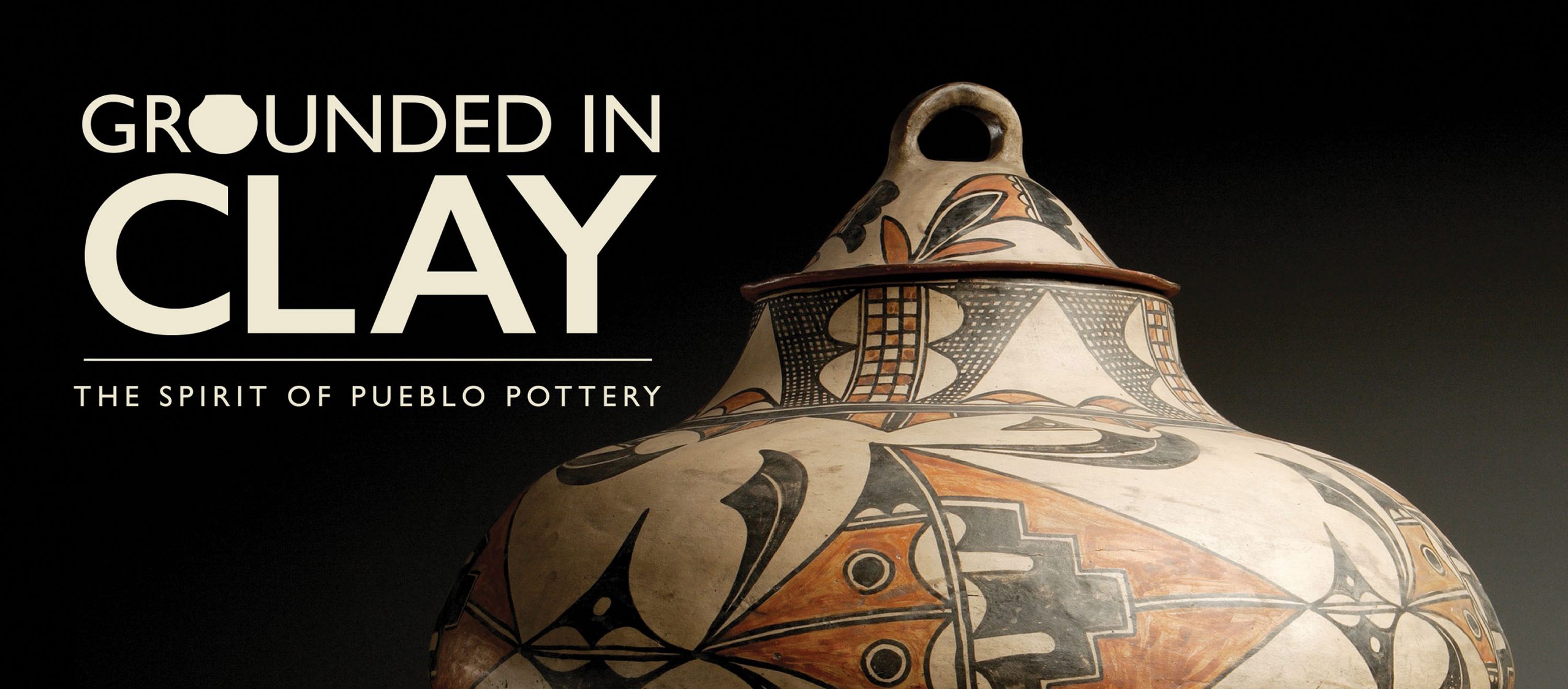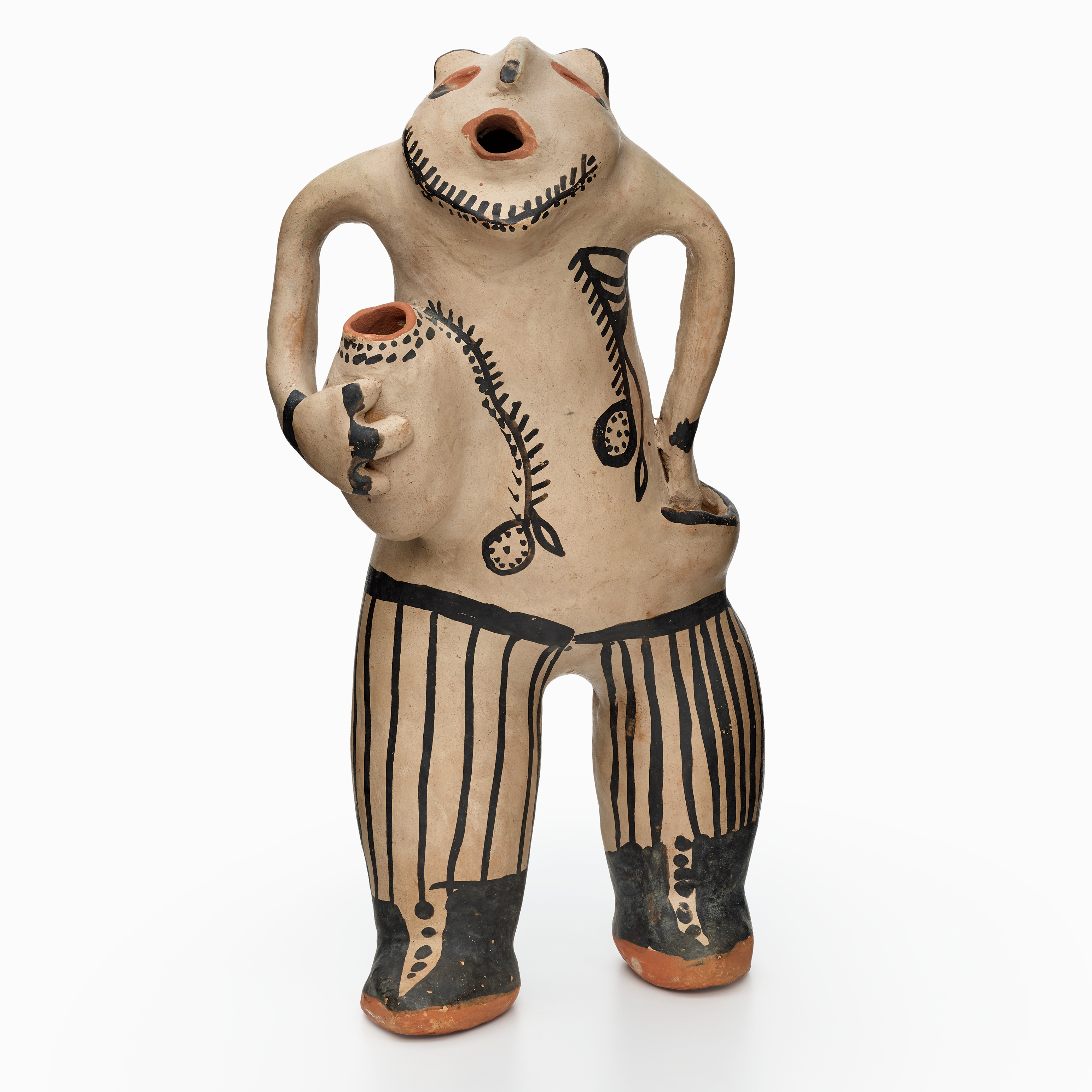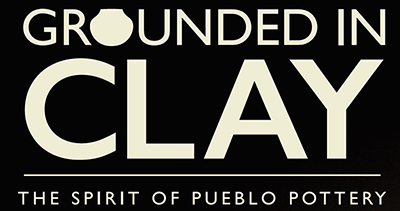
Community-Curated Exhibition Prioritizes Pueblo Indian Knowledge and Experience
Organized by the School for Advanced Research and the Vilcek Foundation, the exhibition debuts July 31, 2022, on Tewa Indian lands at the Museum of Indian Arts & Culture in Santa Fe before traveling nationally.
• Museum of Indian Arts & Culture, Santa Fe, 2022
• The Metropolitan Museum of Art and the Vilcek Foundation, New York, 2023
• The Museum of Fine Arts, Houston, 2024
• Saint Louis Art Museum, 2025
O’gah’poh geh Owingeh/Santa Fe, New Mexico—Pueblo Indian pottery has long been exhibited and interpreted in the academic and museum worlds through singular, often generic, points of view: as ethnographic remnants of the archaeological past or as fine art examples aligned with milestones in Western art history and culture.
But the launch of a unique traveling exhibition featuring over 100 historic and contemporary works in clay offers a visionary understanding of Pueblo pots as vessels of community-based knowledge and personal experience.
Originating in the cradle of the Indigenous Southwest, Grounded in Clay: The Spirit of Pueblo Pottery is a rare exhibition curated by the Native American communities it represents. The project gives authority and voice to the Pueblo Pottery Collective, a group of over 60 individual members of 21 tribal communities who selected and wrote about artistically or culturally distinctive pots from two significant Pueblo pottery collections—the Indian Arts Research Center of the School for Advanced Research (SAR) in Santa Fe and the Vilcek Foundation of New York.
Organized by SAR and the Vilcek Foundation, Grounded in Clay debuts July 31, 2022, on unceded Tewa Indian lands at the Museum of Indian Arts and Culture in Santa Fe before traveling nationally in 2023. The exhibition celebrates the 100th anniversary of the creation of SAR’s Indian Arts Research Center’s pottery collection in 1922. As SAR’s first-ever exhibition, it also marks the institution’s 13-year efforts to bridge the cultural needs and knowledge of Native communities with its public education mission.
“Grounded in Clay is part of our public education mission which, in this case, enables the public to experience pottery through the eyes of Native peoples,” says SAR President Michael F. Brown.
Indian Arts Research Center Director Elysia Poon adds, “Pottery permeates the lives of Pueblo peoples. For many, it is impossible to divorce the pieces from the people.”

San Ildefonso jar with lid, ca. 1900-1910 Clay and paint 20 11/16″ x 16″ IAF.2305

Cochiti mono figurine, ca. 1900 Clay and paint 13 3/4″ x 6 3/4″ x 6 1/8″ IAF.2464

Santo Domingo water jar, ca. 1905-1915 Clay and paint 11 1/2″ x 10 3/4″ IAF.2940
SHIFTING TRADITIONAL EXHIBITION MODELS
Grounded in Clay shifts traditional exhibition curation models, combining individual voices from Native communities where pots have been made and used for millennia into a uniquely Indigenous group narrative. The approach illuminates the complexities of Pueblo history and contemporary life through the curators’ lived experiences, redefining concepts of Native art, history, and beauty from within, confronting academically imposed narratives about Native life, and challenging stereotypes about Native peoples.
“The Pueblos are not a monolith,” says Poon. “Within each community, there are both individual and shared experiences. In many cases, the curators picked pots that weren’t even from their own community. It resulted in a much more complex and rich mixture than we imagined.”
Dating from pre-contact to the present day, the featured pots connect and contrast the lives of Puebloans in communities spanning from New Mexico’s 19 Río Grande Pueblos to the West Texas community of Ysleta del Sur to the Hopi tribe of Arizona. Curators of diverse ages, backgrounds, and professions selected and wrote about one or more works, demonstrating their intimacy with pottery at home and in the greater Pueblo world.
Unlike exhibitions guided by Eurocentric timelines and Western concepts of art and history, Grounded in Clay’s focus on personal and community meaning emerges as a conversation expressed in prose, poetry, and the visual language of pottery. The curators’ firsthand knowledge of pots and potters, family rituals, traditional materials, and daily use grounds viewers in a powerful sense of people and place. At the same time, a thread of ancestral memory connects individual pots to the pride, pain, and living legacy of Pueblo peoples. For example:
- Museum curator Tony Chavarria writes of a ca. 1900 stone-polished blackware olla from his home pueblo of Kha’p’o Owingeh/Santa Clara whose shape sparks a memory of his grandmother’s favorite vintage dress: “I see the flared collar and high neck in this jar. I see my grandma in the beauty from the earth.”
- Haak’u/Acoma Pueblo Governor Brian Vallo praises the skills of the unidentified maker of an extraordinary ca. 1880 Acoma polychrome storage jar: “The master potter had the skill not only to form a jar this size, but to carefully execute other steps in its creation, including a successful outdoor firing. The designs on both the neck and body are classic Acoma pottery patterns depicting clouds, rain, and corn fields. This jar sings loudly to me through its design and its lived experience at Acoma.”
- For artist Kathleen Wall (Walatowa/Jemez), an aunt’s ca. 1982 Nativity set helps reconcile the religious persecution of the past: “Although, Pueblo religion and culture have a long history of concessions and acceptance in order to appease Catholic religion, over the centuries, this has transformed into a beautiful syncretism and celebration of faith for New Mexico Pueblo people.”
- Finally, journalist Tara Gatewood (Shirr-whip Tui/Isleta, Diné) muses on the transformative power of a ca. 1100-1300 Mogollon jar: “To you reading this right now, the viewer, the visitor, the ancestor: Who were you when you stepped to this pot, who are you now?”

Hopi canteen, ca. 1880 Clay 13″ x 12″ SAR.1984-4-3

Ladle, 1050-1300 / Mesa Verde mug, ca. 1150-1300 Clay and paint Ladle 2 1/4″ x 11 7/8″ x 5 1/2″ / mug 4 1/2″ x 4″ IAF.2400 / IAF.2360

Jeralyn Lujan Lucero, Taos Pueblo Figure of woman with bowl, 1995 Micaceous clay and turquoise Figure 10 1/16″ x 9 13/16″ x 9 7/16″; bowl 3 1/4″ x 4 1/2″ SAR.1995-4-9
BUILDING EQUITABLE RELATIONSHIPS
Grounded in Clay is part of a broader SAR initiative to build equity between museums and Native communities. As an international research institution supporting scholarship in social sciences and the humanities, SAR has engaged with Native communities through the Indian Arts Research Center collections since 1922. In 2008, the center embarked on a bold new approach to collections stewardship.
“As caretakers of these collections, we asked ourselves who we are accountable to,” Poon recalls. The question led SAR to shift how it cares for, displays, and interprets its pottery and other tribal collections—in collaboration with, and guidance from, Native communities.
SAR’s efforts and those of other like-minded institutions inspired dialogue with Native and non-Native museum professionals, cultural leaders, and artists. Over three years beginning in 2012, the group developed SAR’s “Guidelines for Collaboration,” a set of principles for building welcoming and successful Native collaborations in collections management, exhibitions, education, and public programs.
“SAR is changing the nature of artistic stewardship,” says SAR President Brown. “As standards change and ideas change, the guidelines change. They are a work in progress in the best possible way.”
SAR’s collaborative approach extends to all aspects of Grounded in Clay, including a robust calendar of educational outreach, exhibitions and collections tours, and other public and private programs on the SAR campus, at the exhibition site on Museum Hill, and online. As Pueblo voices resonate in O’gah’poh geh Owingeh/Santa Fe and points beyond, the public will experience pottery as a dynamic, ever-evolving form of American art.
“This show challenges the concept of historic pottery as relegated to the past,” Poon says. “A bulk of the pieces were made in the 20th century, contemporary with the works of Kandinsky or Warhol. As long as they exist within the living memory of Native peoples, their stories are vibrant and alive.”
TRAVELING EXHIBITION
Grounded in Clay has partnered with the Museum of Indian Arts & Culture for its debut in the Southwest before traveling to The Metropolitan Museum of Art and the Vilcek Foundation in New York; The Museum of Fine Arts, Houston; and the Saint Louis Art Museum. The schedule of presenting partners for this exhibit is:
- July 31, 2022–May 29, 2023, Museum of Indian Arts & Culture, Santa Fe
- July 13, 2023–June 4, 2024, The Metropolitan Museum of Art and the Vilcek Foundation, New York
- October 27, 2024–January 19, 2025, The Museum of Fine Arts, Houston
- March 9–June 1, 2025, Saint Louis Art Museum
Press Contacts SW regional press: Mary Madigan, (505) 954-7223, madigan@sarsf.org National press: Clare Hertel, (505) 670-3090, clare@clarehertelcommunications.com

